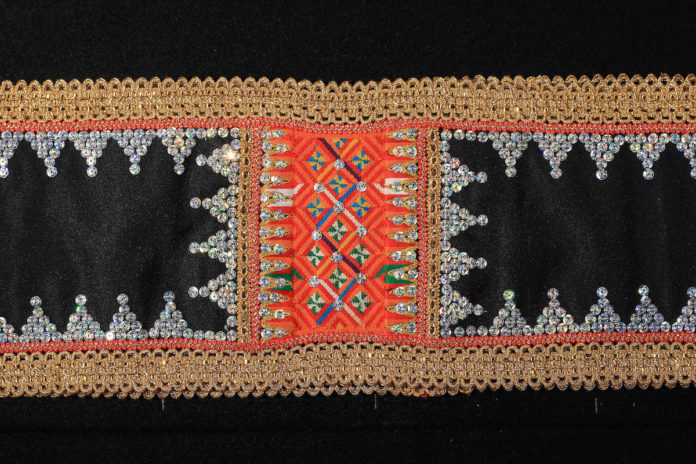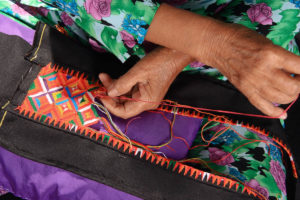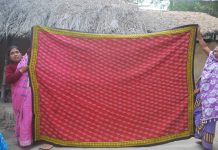
Linangkit is a generic term for a needlework technique that is a unique feature of textiles worn by several indigenous groups on the west coast of Sabah and in Kudat in the north with traditional links to Mindanao in the southern Philippines, from where the technique, now obsolete, is believed to originate. Although linangkit is generally translated as “tapestry weave”, no loom, warp or weft threads are involved. A needle and thread are used to simultaneously create and decorate a narrow, compact panel for joining two pieces of handwoven cloth or the seams of costumes. The complex, laborious needlework requires inordinate patience, skill and good eyesight.
Two lengths of usually black cloth, placed a little distance apart, provide the base. A series of identical and interconnecting knots are then constructed to create the fabric in the gap. The technique generally produces geometric patterns, a distinct feature of the textile. Variations occur in the width and length of the panel required depending on its use and the choice of motifs. Through the use of different coloured embroidery threads and several needles, complex patterns and motifs can be linked together. The fabric created is so sturdy that fine pieces are recycled for use on newer items of clothing.

The indigenous groups of the north and west have their own repertoire of linangkit patterns, identifiable by motifs and colours. The Lotud are famous for the use of bright orange and red threads to create geometric patterns largely inspired by melon seeds, used as panels on tubular skirts, shoulder scarves, jackets and trousers. The Rungus create motifs in defined compartments using less dominant shades to decorate the seams of sarongs tied above the breast and the back of men’s trousers below the waistband. The Bajau create linangkit for the front of long black ceremonial or matrimonial skirts, while the Iranun decorate long skirts.
Although linangkit is a declining art due to the laborious process needed to produce good quality pieces, it remains an integral component of traditional costumes. For this reason, linangkit production is actively encouraged and promoted by state and federal government craft development agencies and cultural NGOs. Visitors can view the craft at the Linangkit Cultural Village in Tuaran.




